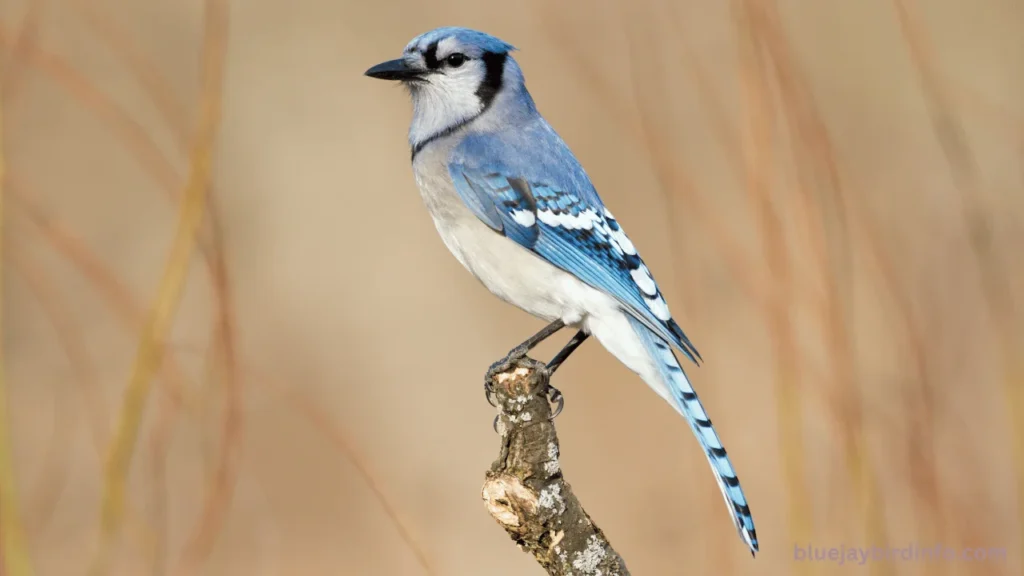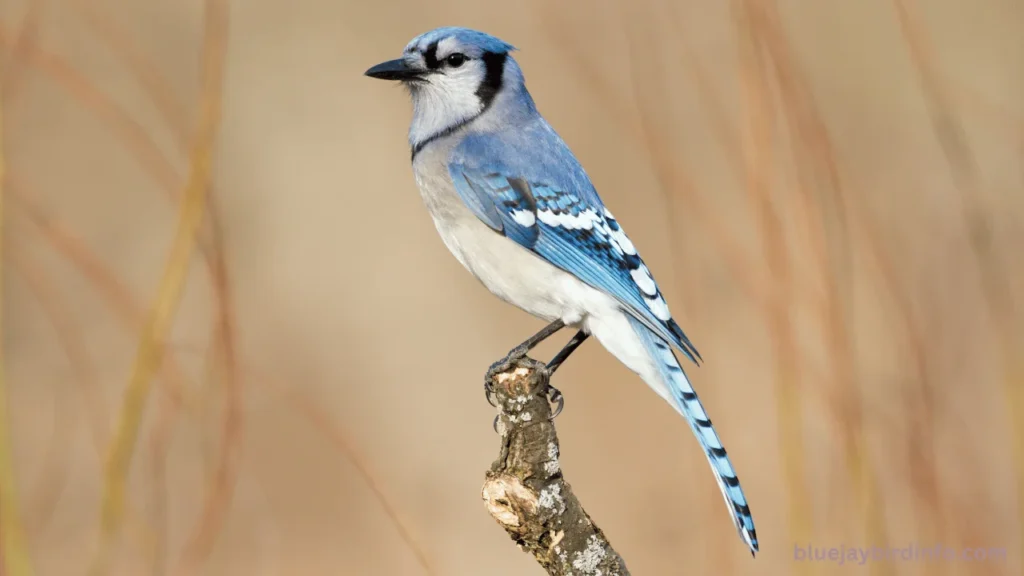As the melodious calls of blue jays echo through the trees, the arrival of spring brings more than just warmer weather; it signals the beginning of the breeding season for these striking birds.
With their vibrant blue feathers and distinctive crest, blue jays are not only a joy to observe but also exhibit fascinating nesting behaviors. One intriguing fact about blue jays is their unique nest construction, which showcases their intelligence and resourcefulness.
They meticulously gather twigs, grass, and other materials to create secure homes for their future chicks. But when do these beautiful birds begin the egg-laying process? Understanding the timing of their nesting can deepen our appreciation of these remarkable creatures.
Blue jays have a specific breeding season during which they lay their eggs, and this timing is influenced by various environmental factors. In this article, we will explore the critical aspects of blue jay nesting behavior, including the seasonal patterns and external influences that determine when these birds will start laying eggs.
By delving into their reproductive cycle, we can gain insights into the challenges blue jays face in raising their young and how these challenges impact their survival.
Nestled within the branches of forests, parks, and suburban areas, blue jays play an important role in the ecosystem. They not only contribute to seed dispersal but also serve as indicators of environmental health.
As we examine the breeding habits of blue jays, it becomes clear that understanding when they lay their eggs is vital for birdwatchers, conservationists, and anyone interested in the natural world. Join us as we uncover the secrets of blue jay nesting and the factors that dictate the timing of this essential life stage.
Contents
- 1 Breeding Season
- 2 Nest Construction
- 3 Egg-Laying
- 4 Incubation and Parental Care
- 5 Factors Influencing Breeding Success
- 6 Conclusion
- 7 FAQ’s
- 7.1 What is the typical breeding season for blue jays?
- 7.2 How many eggs do blue jays typically lay in a single clutch?
- 7.3 What factors can influence the timing of egg-laying in blue jays?
- 7.4 How long does the incubation period last for blue jay eggs?
- 7.5 What challenges do blue jay parents face during the incubation period?
- 7.6 How does climate change affect blue jay breeding patterns?
Breeding Season
The breeding season for blue jays typically occurs in the spring months, generally from April to July, depending on the region. In warmer climates, such as the southern United States, blue jays may start nesting as early as late March.
Conversely, in cooler northern areas, their breeding may not begin until May. This variation in timing is largely influenced by the climate of the region, which affects the availability of food sources and suitable nesting habitats.
As the days grow warmer and the trees begin to blossom, blue jays seek out nutrient-rich food, like insects and seeds, to support their reproductive efforts.
The timing of blue jay breeding is not solely determined by geography; it is also influenced by the habitat conditions in which they live. For instance, if there is an abundant supply of food due to a particularly bountiful year for seeds or insects, blue jays may initiate nesting earlier than usual.

Additionally, local environmental factors, such as weather patterns and habitat disturbances, can lead to fluctuations in their breeding seasons. This potential for variation means that within a single population, some blue jays may lay their eggs earlier or later than their neighbors, creating a diverse timeline for nesting and raising young.
Understanding these dynamics is crucial for bird enthusiasts and conservationists alike, as they provide insight into the adaptive strategies blue jays use to thrive in changing environments.
Nest Construction
The process of nest construction by blue jays is a remarkable display of their resourcefulness and adaptability. Typically, blue jays build their nests in the branches of trees, often at a height of 5 to 20 feet, where they feel safer from ground predators.
They favor deciduous trees and shrubs for nesting, but they are also known to utilize structures such as attics or ledges in urban settings. The nests are crafted using a variety of materials, including twigs, leaves, grasses, and even pieces of plastic or fabric that they may find in their environment.
The use of these diverse materials not only provides structural integrity but also helps to camouflage the nest against potential threats.
Several factors influence nest site selection for blue jays. Predation risk is a significant concern; they prefer locations that offer good cover from predators such as cats or hawks.
Additionally, the availability of nearby food sources plays a role in their nesting decisions, as blue jays need to ensure they can easily access food for themselves and their chicks. Human activity can also impact their choice of nesting sites; areas with less disturbance are more attractive to these birds.
The dynamics of pair bonding and territorial behavior are crucial in the nesting process as well. During the breeding season, blue jays establish strong pair bonds that often last for several seasons. This partnership allows them to collaborate effectively in nest construction and care for their young.
Territorial behaviors also come into play, as blue jays will defend their nesting areas from other birds, ensuring a safe environment for raising their chicks. This combination of teamwork and vigilance underscores the importance of nest construction in the survival and reproductive success of blue jays.
Egg-Laying
Blue jays typically lay between 3 to 6 eggs in a single clutch, with the exact number varying based on several factors. The clutch size can be influenced by the age and experience of the female; older, more experienced birds tend to produce larger clutches, while younger females may lay fewer eggs.
Additionally, environmental conditions, such as the availability of food and the presence of predators, can also affect how many eggs a female blue jay will lay. For instance, during years when food is plentiful, a blue jay might be more inclined to lay a larger clutch, ensuring a better chance for some of the chicks to survive to adulthood.
The timing of egg-laying within the breeding season is another critical aspect of blue jay reproduction. Generally, blue jays begin laying eggs in late spring, often around April to June, depending on the climate and geographical location.
This timing allows the chicks to hatch during a period of abundant food availability, which is crucial for their growth and survival. Additionally, blue jays may have the potential for multiple broods in a single season, especially in regions with favorable conditions.
If a first clutch is successfully raised and environmental factors remain conducive, they may lay a second clutch within the same breeding season. This ability to produce multiple broods enhances the overall reproductive success of blue jays, allowing them to thrive in various habitats.
Incubation and Parental Care
The incubation period for blue jay eggs typically lasts around 16 to 18 days, during which both male and female parents share the responsibility of keeping the eggs warm and safe.
The female primarily handles the incubation, while the male plays a supportive role by bringing food and keeping watch for potential threats. This cooperative effort is crucial, as the safety of the eggs is paramount during this vulnerable stage of development.
Parents face numerous challenges during the incubation period, including the constant threat of predation from various birds and mammals that may be looking for an easy meal.
Additionally, adverse weather conditions, such as heavy rains or cold spells, can jeopardize both the eggs and the parents’ ability to maintain the right temperature for successful incubation. To combat these risks, blue jays often choose nest locations that offer some degree of protection, such as dense foliage or higher branches.
The role of parental care during incubation is vital for ensuring the survival of the chicks. Without consistent warmth and protection, the eggs may fail to develop properly. Once the eggs hatch, parental involvement continues as both parents feed and protect the young chicks.
This early investment in their offspring not only enhances the chicks’ chances of survival but also strengthens the parental bond, ultimately contributing to the long-term success of blue jay populations in their habitats.
Factors Influencing Breeding Success
The success of blue jay breeding is influenced by a variety of factors, including habitat quality, food availability, and predation risk. High-quality habitats provide the necessary resources for nesting and rearing young, while adequate food supplies ensure that both the parents and chicks receive the nutrition they need during the crucial breeding season.
Additionally, a lower risk of predation can significantly enhance the chances of survival for both eggs and chicks, allowing them to grow and thrive in a safer environment.
Human activities pose significant threats to blue jay breeding success. Habitat loss due to urbanization, agriculture, and deforestation can lead to the destruction of essential nesting sites and food sources.
Disturbances from human presence can also deter blue jays from nesting in certain areas, leading to decreased reproductive success. Furthermore, climate change introduces additional challenges, such as altered weather patterns and shifts in food availability, which can affect the timing of breeding and the overall health of blue jay populations.
Changes in temperature and precipitation can disrupt the natural cycles of food resources, making it harder for blue jays to find sufficient sustenance for themselves and their young.
As the climate continues to change, understanding these factors is crucial for the conservation and management of blue jay populations.
By recognizing the intricate relationship between habitat quality, human impact, and climate conditions, we can better protect these vibrant birds and ensure their successful breeding in an ever-changing environment.

Conclusion
In summary, blue jays have a specific breeding season that varies based on regional factors such as climate, food availability, and habitat conditions. The nest construction process is a crucial aspect of their reproductive cycle, involving careful selection of materials and locations that help mitigate predation risks.
Blue jays typically lay a clutch of eggs, with factors like age and environmental conditions influencing clutch size. The incubation period requires the dedicated involvement of both parents, as they face various challenges during this time.
Ultimately, understanding the factors influencing breeding success—including habitat quality, human impact, and climate change—is vital for the conservation of blue jays.
As we reflect on the nesting behavior of blue jays, it’s essential to recognize their ecological significance within our environment. By studying their reproductive cycle, we gain insight into the health of local ecosystems and the challenges birds face in a changing world.
Such knowledge not only enhances our appreciation for these beautiful creatures but also underscores the importance of protecting their habitats.
I encourage readers to engage in citizen science projects or conduct their own observations to contribute to our understanding of blue jay biology. Your findings can help inform conservation efforts and promote awareness about the delicate balance of nature that blue jays—and many other species—depend on.
Also read other articles regarding Blue Jay Nesting!
FAQ’s
What is the typical breeding season for blue jays?
Blue jays usually breed from late March to early July, depending on their region.
How many eggs do blue jays typically lay in a single clutch?
Blue jays usually lay between 3 to 6 eggs in a single clutch.
What factors can influence the timing of egg-laying in blue jays?
Factors such as climate, food availability, and habitat conditions can influence the timing of egg-laying.
How long does the incubation period last for blue jay eggs?
The incubation period for blue jay eggs typically lasts about 16 to 18 days.
What challenges do blue jay parents face during the incubation period?
Parents face challenges such as predation, adverse weather conditions, and competition for food.
How does climate change affect blue jay breeding patterns?
Climate change can disrupt food availability and alter breeding timelines, impacting reproductive success.








